Comprehensive Utilization of Avocado in Biorefinery: A Bibliometric and Co-Occurrence Approach 2003–2023
Abstract
1. Introduction
1.1. Generalities of Avocado
1.2. Biorefinery Concept Relevance for Avocado Utilization
2. Materials and Methods
2.1. Bibliometric and Co-Occurrence Assessment
2.2. Relevant Publications Analysis
3. Results and Discussion
3.1. “Avocado” and “Biorefinery” Bibliometric Study
3.2. Co-Occurrence Study and Tendences
3.3. Technological Advances and Future Path
3.3.1. Extraction Methods, Characterization, and Identification of Active Compounds in the Avocado Byproducts
Extraction of Active Compounds in Avocado by Products
Characterization and Identification of Avocado Bioactive Compounds
3.3.2. Integral Avocado Transformation Process and Products
Mass Based Transformation of Avocado by Products
Energy and Fuel Production from Avocado by Products
Value-Added Products Obtained from Avocado
3.3.3. Assessment of the Avocado Utilization Process Under Sustainability Criteria
4. Conclusions
Author Contributions
Funding
Data Availability Statement
Acknowledgments
Conflicts of Interest
References
- Bedoya-Ramírez, S.I.; Saavedra-Porras, S.; Loaiza-Ruíz, R.A.; Barrera-Sánchez, C.F. Physiological and morphological characterization of avocado creole (Persea americana Mill.) accessions for elite rootstocks. Rev. Colomb. Cienc. Hortíc. 2023, 17, e15830. [Google Scholar] [CrossRef]
- Cummings, K.; Schroeder, C.A. Anatomy of the Avocado Fruit; California Avocado Society: Los Angeles, CA, USA, 1942. [Google Scholar]
- Wu, D.; Xu, Z.; Bach, S. Using Google Trends to predict and forecast avocado sales. J. Mark. Anal. 2023, 11, 629–641. [Google Scholar] [CrossRef]
- Ramos-Aguilar, A.L.; Ornelas-Paz, J.; Tapia-Vargas, L.M.; Gardea-Bejar, A.A.; Yahia, E.M.; de Jesús Ornelas-Paz, J.; Perez-Martinez, J.D.; Rios-Velasco, C.; Escalante-Minakata, P. Metabolomic analysis and physical attributes of ripe fruits from Mexican Creole (Persea americana var. Drymifolia) and “Hass” avocados. Food Chem. 2021, 354, 129571. [Google Scholar] [CrossRef] [PubMed]
- Damián-Nava, A.; Palemón-Alberto, F.; Moreno-Juárez, J.; Hernández-Castro, E.; Damián-Díaz, P.E.; Vargas-Álvarez, D.; Díaz-Villaseñor, G.; Villegas-Torres, O.G.; Reyes-García, G. Characterization of creole avocado fruits harvested from both central and northern regions of Guerrero, Mexico. Int. J. Adv. Res. Biol. Sci. 2017, 4, 151–159. [Google Scholar] [CrossRef]
- Cervantes-Paz, B.; Yahia, E.M. Avocado oil: Production and market demand, bioactive components, implications in health, and tendencies and potential uses. Compr. Rev. Food Sci. Food Saf. 2021, 20, 4120–4158. [Google Scholar] [CrossRef]
- Wu, X.; Gu, L.; Holden, J.; Haytowitz, D.B.; Gebhardt, S.E.; Beecher, G.; Prior, R.L. Development of a database for total antioxidant capacity in foods: A preliminary study. J. Food Compos. Anal. 2004, 17, 407–422. [Google Scholar] [CrossRef]
- Flores, M.; Saravia, C.; Vergara, C.E.; Avila, F.; Valdés, H.; Ortiz-Viedma, J. Avocado Oil: Characteristics, Properties, and Applications. Molecules 2019, 24, 2172. [Google Scholar] [CrossRef]
- Reddy, M.; Moodley, R.; Jonnalagadda, S.B. Fatty acid profile and elemental content of avocado (Persea americana Mill.) oil –effect of extraction methods. J. Environ. Sci. Health Part B 2012, 47, 529–537. [Google Scholar] [CrossRef]
- Ortiz Moreno, A.; Dorantes, L.; Galíndez, J.; Guzmán, R.I. Effect of different extraction methods on fatty acids, volatile compounds, and physical and chemical properties of avocado (Persea americana Mill.) oil. J. Agric. Food Chem. 2003, 51, 2216–2221. [Google Scholar] [CrossRef]
- Lara-García, C.T.; Jiménez-Islas, H.; Miranda-López, R.; Lara-García, C.T.; Jiménez-Islas, H.; Miranda-López, R. Perfil de compuestos orgánicos volátiles y ácidos grasos del aguacate (Persea americana) y sus beneficios a la salud. CienciaUAT 2021, 16, 162–177. [Google Scholar] [CrossRef]
- Darshana, D.; Chutiwitoonchai, N.; Paemanee, A.; Sureram, S.; Mahidol, C.; Ruchirawat, S.; Kittakoop, P. Virucidal and Antiviral Polyhydroxylated Fatty Alcohols in Avocado Fruit Pulp (Persea americana) of Booth 7 Cultivar. ACS Food Sci. Technol. 2023, 3, 1759–1767. [Google Scholar] [CrossRef]
- Duarte, P.F.; Chaves, M.A.; Borges, C.D.; Mendonça, C.R.B. Avocado: Characteristics, health benefits and uses. Ciênc. Rural 2016, 46, 747–754. [Google Scholar] [CrossRef]
- Ramos-Aguilar, A.L.; Ornelas-Paz, J.; Tapia-Vargas, L.M.; Ruiz-Cruz, S.; Gardea-Béjar, A.A.; Yahia, E.M.; De, J.; Ornelas-Paz, J.; Pérez-Martínez, J.D.; Rios-Velasco, C.; et al. The importance of the bioactive compounds of avocado fruit (Persea americana Mill) on human health. Biotecnia 2019, 21, 154–162. [Google Scholar] [CrossRef]
- Peou, S.; Milliard-Hasting, B.; Shah, S.A. Impact of avocado-enriched diets on plasma lipoproteins: A meta-analysis. J. Clin. Lipidol. 2016, 10, 161–171. [Google Scholar] [CrossRef] [PubMed]
- Hassan, M.; Moneim, S.A.; Mahmoud, E.A.; Mohamed, D.A. Antioxidant, Anti-Cancer and Anti-Arthritic Activities of Acetogenin Richextract of Avocado Pulp. Egypt. J. Chem. 2022, 65, 539–550. [Google Scholar] [CrossRef]
- D’Ambrosio, S.M.; Han, C.; Pan, L.; Douglas Kinghorn, A.; Ding, H. Aliphatic acetogenin constituents of avocado fruits inhibit human oral cancer cell proliferation by targeting the EGFR/RAS/RAF/MEK/ERK1/2 pathway. Biochem. Biophys. Res. Commun. 2011, 409, 465–469. [Google Scholar] [CrossRef]
- Tcheng, M.; Ahmed, N.; Spagnuolo, P.A. Structure defines bioactivity of avocado-derived acetogenins. In Studies in Natural Products Chemistry; Elsevier: Amsterdam, The Netherlands, 2023; Volume 78, pp. 1–44. [Google Scholar]
- Villarreal-Lara, R.; Rodríguez-Sánchez, D.G.; Díaz De La Garza, R.I.; García-Cruz, M.I.; Castillo, A.; Pacheco, A.; Hernández-Brenes, C. Purified avocado seed acetogenins: Antimicrobial spectrum and complete inhibition of Listeria monocytogenes in a refrigerated food matrix. CyTA-J. Food 2019, 17, 228–239. [Google Scholar] [CrossRef]
- López-Galé, Y.; Murcia-Riaño, N.; Romero-Barrera, Y.; Martínez, M.F.; López-Galé, Y.; Murcia-Riaño, N.; Romero-Barrera, Y.; Martínez, M.F. Morphological characterization of seed-donor Creole avocado trees from three areas in Colombia. Rev. Chapingo Ser. Hortic. 2022, 28, 93–108. [Google Scholar] [CrossRef]
- Knight, R.J.; Campbell, C.W. Ecological adaptation and the evolution of modern avocado cultivars. Rev. Chapingo Ser. Hortic. 1999, 5, 49–54. [Google Scholar] [CrossRef]
- Shahbandeh, M. Global Production of Avocados by Country 2021. Statista 2021. Available online: https://www.statista.com/statistics/577455/world-avocado-production (accessed on 27 April 2024).
- Solarte-Toro, J.C.; Ortiz-Sanchez, M.; Restrepo-Serna, D.L.; Peroza Piñeres, P.; Pérez Cordero, A.; Cardona Alzate, C.A. Influence of products portfolio and process contextualization on the economic performance of small- and large-scale avocado biorefineries. Bioresour. Technol. 2021, 342, 126060. [Google Scholar] [CrossRef]
- Ministerio de Agricultura y Desarrollo Rural. Cadena Productiva Aguacate: Composición y Caracterización de la Cadena. 2021. Available online: https://sioc.minagricultura.gov.co/Aguacate/Pages/default.aspx (accessed on 28 April 2024).
- Peláez-Peinado, V.; Núñez-Cadavid, D.F. Potential exporter of Colombian avocado to South Korea. Rev. Digit. Mundo Asia Pacífico 2020, 9, 90–103. [Google Scholar]
- Díaz Diez, C.A.; Bernal Estrada, J.A.; Builes Gaitán, S.; Caicedo, A.M.; Carabalí Muñoz, A.; Casamitjana Causa, M.; Córdoba Gaona, Ó.d.J.; Duque Ríos, M.; Forero Longas, F.; Londoño Bonilla, M.; et al. Actualización Tecnológica y Buenas Prácticas Agrícolas (BPA) en el Cultivo de Aguacate, 2nd ed.; AGROSAVIA: Bogotá, Colombia, 2020. [Google Scholar] [CrossRef]
- Burbano-Figueroa, O.; Burbano-Figueroa, O. Sistemas agroforestales de aguacate antillano en Montes de María (Colombia): Un modelo conceptual del sistema de producción. Rev. Chapingo Ser. Hortic. 2019, 25, 75–102. [Google Scholar] [CrossRef]
- Mallarino-Miranda, L.; Tejeda-Benítez, L.M.; Jiménez-Escalante, M.; González-Delgado, Á.D.; Tejeda-Benítez, L.P. Aprovechamiento sostenible del aguacate (Laurus persea) para la obtención de productos de valor agregado en los Montes de María en el Departamento de Bolívar-Colombia. RIADS Rev. Investig. Agropecu. Desarro. Sosten. 2020, 5, 32–38. [Google Scholar]
- Vega, J.Y. El Aguacate en Colombia: Estudio de Caso de los Montes de María, en el Caribe Colombiano. Banco de la Republica de Colombia. Documentos de Trabajo Sobre Economía Regional y Urbana 171. 2012. Available online: https://repositorio.banrep.gov.co/items/b4d89372-574d-4a34-8f09-9ff6ea7f9464 (accessed on 28 April 2024).
- Méndez Prada, M.C.; Martínez-Huerta, R. Análisis descriptivo de la competitividad en la cadena productiva de aguacate en la región Montes de María: Una aproximación desde el diamante de Porter. In Diálogo de Saberes Desde Ciencias Económicas, Administrativas y Contables; CECAR Editorial: Bogotá, Colombia, 2020; Volume 4, pp. 238–253. [Google Scholar] [CrossRef]
- Satriana, S.; Supardan, M.D.; Arpi, N.; Wan Mustapha, W.A. Development of Methods Used in the Extraction of Avocado Oil. Eur. J. Lipid Sci. Technol. 2019, 121, 1800210. [Google Scholar] [CrossRef]
- Tan, C.X. Virgin avocado oil: An emerging source of functional fruit oil. J. Funct. Foods 2019, 54, 381–392. [Google Scholar] [CrossRef]
- Costagli, G.; Betti, M. Avocado oil extraction processes: Method for cold-pressed high-quality edible oil production versus traditional production. J. Agric. Eng. 2015, 46, 115–122. [Google Scholar] [CrossRef]
- Tan, C.X.; Chong, G.H.; Hamzah, H.; Ghazali, H.M. Comparison of subcritical CO2 and ultrasound-assisted aqueous methods with the conventional solvent method in the extraction of avocado oil. J. Supercrit. Fluids 2018, 135, 45–51. [Google Scholar] [CrossRef]
- Tan, C.X.; Ghazali, H.M. Avocado (Persea americana Mill.) Oil. Fruit Oils Chem. Funct. 2019, 353–375. [Google Scholar] [CrossRef]
- Nyakang’i, C.O.; Ebere, R.; Marete, E.; Arimi, J.M. Avocado production in Kenya in relation to the world, Avocado by-products (seeds and peels) functionality and utilization in food products. Appl. Food Res. 2023, 3, 100275. [Google Scholar] [CrossRef]
- Sandoval-Contreras, T.; González Chávez, F.; Poonia, A.; Iñiguez-Moreno, M.; Aguirre-Güitrón, L. Avocado Waste Biorefinery: Towards Sustainable Development. Recycling 2023, 8, 81. [Google Scholar] [CrossRef]
- Garcia-Vallejo, M.C.; Agudelo Patiño, T.; Poveda-Giraldo, J.A.; Piedrahita-Rodríguez, S.; Cardona Alzate, C.A. Alternatives for the Valorization of Avocado Waste Generated in the Different Links of the Value Chain Based on a Life-Cycle Analysis Approach. Agronomy 2023, 13, 2229. [Google Scholar] [CrossRef]
- Del Castillo-Llamosas, A.; del Río, P.G.; Pérez-Pérez, A.; Yáñez, R.; Garrote, G.; Gullón, B. Recent advances to recover value-added compounds from avocado by-products following a biorefinery approach. Curr. Opin. Green Sustain. Chem. 2021, 28, 100433. [Google Scholar] [CrossRef]
- Páramos, P.R.S.; Granjo, J.F.O.; Corazza, M.L.; Matos, H.A. Extraction of high value products from avocado waste biomass. J. Supercrit. Fluids 2020, 165, 104988. [Google Scholar] [CrossRef]
- Mora-Sandí, A.; Ramírez-González, A.; Castillo-Henríquez, L.; Lopretti-Correa, M.; Vega-Baudrit, J.R. Persea americana Agro-Industrial Waste Biorefinery for Sustainable High-Value-Added Products. Polymers 2021, 13, 1727. [Google Scholar] [CrossRef]
- Tesfaye, T.; Ayele, M.; Gibril, M.; Ferede, E.; Limeneh, D.Y.; Kong, F. Beneficiation of avocado processing industry by-product: A review on future prospect. Curr. Res. Green Sustain. Chem. 2022, 5, 100253. [Google Scholar] [CrossRef]
- Poveda-Giraldo, J.A.; Piedrahita-Rodríguez, S.; Salgado Aristizabal, N.; Salas-Moreno, M.; Cardona Alzate, C.A. Prefeasibility analysis of small-scale biorefineries: The annatto and açai case to improve the incomes of rural communities. Biomass Convers. Biorefin. 2022, 1, 12227–12252. [Google Scholar] [CrossRef]
- Ubando, A.T.; Felix, C.B.; Chen, W.H. Biorefineries in circular bioeconomy: A comprehensive review. Bioresour. Technol. 2020, 299, 122585. [Google Scholar] [CrossRef]
- González-Delgado, Á.D.; Moreno-Sader, K.A.; Martínez-Consuegra, J.D. Sustainable Biorefining of shrimp: Developments from Computer Aided Process Engineering (In Spanish); Corporación Universitaria Minuto de Dios-UNIMINUTO: Bogotá, Colombia, 2022. [Google Scholar] [CrossRef]
- Trujillo-Mayol, I.; Badillo-Muñoz, G.; Céspedes-Acuña, C.; Alarcón-Enos, J. The Relationship between Fruit Size and Phenolic and Enzymatic Composition of Avocado Byproducts (Persea americana Mill.): The Importance for Biorefinery Applications. Horticulturae 2020, 6, 91. [Google Scholar] [CrossRef]
- Cowan, A.K.; Cripps, R.F.; Richings, E.W.; Taylor, N.J. Fruit size: Towards an understanding of the metabolic control of fruit growth using avocado as a model system. Physiol. Plant. 2001, 111, 127–136. [Google Scholar] [CrossRef]
- Treutter, D. Significance of flavonoids in plant resistance: A review. Environ. Chem. Lett. 2006, 4, 147–157. [Google Scholar] [CrossRef]
- Lara-Flores, A.A.; Araújo, R.G.; Rodríguez-Jasso, R.M.; Aguedo, M.; Aguilar, C.N.; Trajano, H.L.; Ruiz, H.A. Bioeconomy and Biorefinery: Valorization of Hemicellulose from Lignocellulosic Biomass and Potential Use of Avocado Residues as a Promising Resource of Bioproducts. Energy Environ. Sustain. 2018, 141–170. [Google Scholar] [CrossRef]
- Avalos-Viveros, M.; Santolalla-Vargas, C.-E.; Santes-Hernández, V.-F.; Martínez-Flores, H.-E.; Torres-García, E.; López-Meza, J.-E.; Virgen-Ortiz, J.-J.; Pérez-Calix, E.; García-Pérez, M.-E. Valorization of avocado peels by conventional extraction and hydrothermal carbonization for cosmeceutical applications. Sustain. Chem. Pharm. 2023, 36, 101335. [Google Scholar] [CrossRef]
- Suleria, H.A.R.; Barrow, C.J.; Dunshea, F.R. Screening and Characterization of Phenolic Compounds and Their Antioxidant Capacity in Different Fruit Peels. Foods 2020, 9, 1206. [Google Scholar] [CrossRef] [PubMed]
- King-Loeza, Y.; Ciprián-Macías, D.A.; Cardador-Martínez, A.; Martín-del-Campo, S.T.; Castañeda-Saucedo, M.C.; del Pilar Ramírez-Anaya, J. Functional composition of avocado (Persea americana Mill. Var Hass) pulp, extra virgin oil, and residues is affected by fruit commercial classification. J. Agric. Food Res. 2023, 12, 100573. [Google Scholar] [CrossRef]
- Leontopoulos, S.; Skenderidis, P.; Petrotos, K.; Giavasis, I. Corn Silage Supplemented with Pomegranate (Punica granatum) and Avocado (Persea americana) Pulp and Seed Wastes for Improvement of Meat Characteristics in Poultry Production. Molecules 2021, 26, 5901. [Google Scholar] [CrossRef]
- de Evan, T.; Carro, M.D.; Yepes, J.E.F.; Haro, A.; Arbesú, L.; Romero-Huelva, M.; Molina-Alcaide, E. Effects of Feeding Multinutrient Blocks Including Avocado Pulp and Peels to Dairy Goats on Feed Intake and Milk Yield and Composition. Animals 2020, 10, 194. [Google Scholar] [CrossRef]
- Sierra-Ibarra, E.; Leal-Reyes, L.J.; Huerta-Beristain, G.; Hernández-Orihuela, A.L.; Gosset, G.; Martínez-Antonio, A.; Martinez, A. Limited oxygen conditions as an approach to scale-up and improve d and l-lactic acid production in mineral media and avocado seed hydrolysates with metabolically engineered Escherichia coli. Bioprocess Biosyst. Eng. 2021, 44, 379–389. [Google Scholar] [CrossRef]
- Merino, D.; Bertolacci, L.; Paul, U.C.; Simonutti, R.; Athanassiou, A. Avocado Peels and Seeds: Processing Strategies for the Development of Highly Antioxidant Bioplastic Films. ACS Appl. Mater. Interfaces 2021, 13, 38688–38699. [Google Scholar] [CrossRef]
- Ranzi, E.; Costa, M.; Streitwieser, D.A.; Cadena, I.A. Preliminary Study of Biomethane Production of Organic Waste based on their Content of Sugar, Starch, Lipid, Protein and Fibre. Chem. Eng. Trans. 2018, 65, 661–666. [Google Scholar] [CrossRef]
- Vintila, T.; Ionel, I.; Tiegam, T.; Fregue, R.; Wächter, A.R.; Julean, C.; Gabche, A.S. Residual Biomass from Food Processing Industry in Cameroon as Feedstock for Second-generation Biofuels. BioResources 2019, 14, 3731–3745. [Google Scholar] [CrossRef]
- Solarte-Toro, J.C.; Ortiz-Sanchez, M.; Cardona Alzate, C.A. Environmental life cycle assessment (E-LCA) and social impact assessment (SIA) of small-scale biorefineries implemented in rural zones: The avocado (Persea americana var. Americana) case in Colombia. Environ. Sci. Pollut. Res. 2023, 30, 8790–8808. [Google Scholar] [CrossRef] [PubMed]
- Jung, J.M.; Oh, J.I.; Kwon, D.; Park, Y.K.; Zhang, M.; Lee, J.; Kwon, E.E. Synthesis of fatty acid methyl esters via non-catalytic transesterification of avocado oil with dimethyl carbonate. Energy Convers. Manag. 2019, 195, 1–6. [Google Scholar] [CrossRef]
- China’s Avocado Imports and Domestic Production Both Expected To Grow|Produce Report. 2022. Available online: https://fas.usda.gov/data/china-2022-fresh-avocado-report (accessed on 12 June 2024).
- Duan, Y.; Pandey, A.; Zhang, Z.; Awasthi, M.K.; Bhatia, S.K.; Taherzadeh, M.J. Organic solid waste biorefinery: Sustainable strategy for emerging circular bioeconomy in China. Ind. Crop. Prod. 2020, 153, 112568. [Google Scholar] [CrossRef]
- Pattnaik, F.; Patra, B.R.; Nanda, S.; Mohanty, M.K.; Dalai, A.K.; Rawat, J. Drivers and Barriers in the Production and Utilization of Second-Generation Bioethanol in India. Recycling 2024, 9, 19. [Google Scholar] [CrossRef]
- Raj, T.; Chandrasekhar, K.; Naresh Kumar, A.; Rajesh Banu, J.; Yoon, J.J.; Kant Bhatia, S.; Yang, Y.H.; Varjani, S.; Kim, S.H. Recent advances in commercial biorefineries for lignocellulosic ethanol production: Current status, challenges and future perspectives. Bioresour. Technol. 2022, 344, 126292. [Google Scholar] [CrossRef]
- UNESCO Institute for Statistics Global Investments in R&D. Susteinable Dev. Goals 2019, 54, 1–9. Available online: http://uis.unesco.org/sites/default/files/documents/fs54-global-investments-rd-2019-en.pdf (accessed on 25 May 2024).
- Muralidhara, B.M.; Sakthivel, T.; Karunakaran, G.; Venugopalan, R.; Venkatravanappa, V.; Siddanna, S.; Karthik Nayaka, V.S.; Shivashankara, K.S.; Honnabyraiah, M.K. Survey, collection and characterization of Indian avocado (Persea americana) germplasm for morphological characters. Indian J. Agric. Sci. 2023, 93, 139–144. [Google Scholar] [CrossRef]
- Proestou, M.; Schulz, N.; Feindt, P.H. A global analysis of bioeconomy visions in governmental bioeconomy strategies. Ambio 2024, 53, 376–388. [Google Scholar] [CrossRef]
- Shivachi, B.; Abong, G.O.; Okoth, M.W.; Gikonge, D. Status of Avocado Production, Postharvest Handling and Utilization in Kenya. East Afr. J. Sci. Technol. Innov. 2023, 4, 1–15. [Google Scholar] [CrossRef]
- Henry, G.; Hodson, E.; Aramendis, R.; Trigo, E.; Rankin, S. Bioeconomy: An Engine for Integral Development of Colombia. 2017. Available online: https://cgspace.cgiar.org/handle/10568/92082?show=full (accessed on 27 May 2024).
- Grilli, G.; Cantillo, T.; Turner, K.; Erazo, J.; Murcia López, M.A.; Valle Parra, J.S.; Cardona, F.G.; Ferrini, S. A decision support procedure for the bioeconomy transition: A colombian case study. J. Environ. Manag. 2024, 352, 120042. [Google Scholar] [CrossRef]
- Araújo, R.G.; Rodriguez-Jasso, R.M.; Ruiz, H.A.; Pintado, M.M.E.; Aguilar, C.N. Avocado by-products: Nutritional and functional properties. Trends Food Sci. Technol. 2018, 80, 51–60. [Google Scholar] [CrossRef]
- Ruiz, H.A.; Conrad, M.; Sun, S.N.; Sanchez, A.; Rocha, G.J.M.; Romaní, A.; Castro, E.; Torres, A.; Rodríguez-Jasso, R.M.; Andrade, L.P.; et al. Engineering aspects of hydrothermal pretreatment: From batch to continuous operation, scale-up and pilot reactor under biorefinery concept. Bioresour. Technol. 2020, 299, 122685. [Google Scholar] [CrossRef] [PubMed]
- Villacís-Chiriboga, J.; Elst, K.; Van Camp, J.; Vera, E.; Ruales, J. Valorization of byproducts from tropical fruits: Extraction methodologies, applications, environmental, and economic assessment: A review (Part 1: General overview of the byproducts, traditional biorefinery practices, and possible applications). Compr. Rev. Food Sci. Food Saf. 2020, 19, 405–447. [Google Scholar] [CrossRef]
- Dávila, J.A.; Rosenberg, M.; Castro, E.; Cardona, C.A. A model biorefinery for avocado (Persea americana mill.) processing. Bioresour. Technol. 2017, 243, 17–29. [Google Scholar] [CrossRef] [PubMed]
- Solarte-Toro, J.C.; Cardona Alzate, C.A. Biorefineries as the base for accomplishing the sustainable development goals (SDGs) and the transition to bioeconomy: Technical aspects, challenges and perspectives. Bioresour. Technol. 2021, 340, 125626. [Google Scholar] [CrossRef]
- García-Vargas, M.C.; Contreras, M.D.M.; Castro, E. Avocado-Derived Biomass as a Source of Bioenergy and Bioproducts. Appl. Sci. 2020, 10, 8195. [Google Scholar] [CrossRef]
- Muhammad, D.R.A.; Ayouaz, S.; Rachmawati, A.N.; Madani, K.; Fibri, D.L.N.; Rafi, M.; Julianti, E.; Fahmy, K. Advanced and Potential Methods for Extraction of Bioactive Compounds from Avocado Peel—A Review. Appl. Sci. 2024, 14, 6018. [Google Scholar] [CrossRef]
- Jimenez, P.; Garcia, P.; Quitral, V.; Vasquez, K.; Parra-Ruiz, C.; Reyes-Farias, M.; Garcia-Diaz, D.F.; Robert, P.; Encina, C.; Soto-Covasich, J. Pulp, Leaf, Peel and Seed of Avocado Fruit: A Review of Bioactive Compounds and Healthy Benefits. Food Rev. Int. 2021, 37, 619–655. [Google Scholar] [CrossRef]
- Rojas-García, A.; Fuentes, E.; Cádiz-Gurrea, M.d.l.L.; Rodriguez, L.; Villegas-Aguilar, M.d.C.; Palomo, I.; Arráez-Román, D.; Segura-Carretero, A. Biological Evaluation of Avocado Residues as a Potential Source of Bioactive Compounds. Antioxidants 2022, 11, 1049. [Google Scholar] [CrossRef]
- Gnaim, R.; Unis, R.; Gnayem, N.; Das, J.; Shamis, O.; Gozin, M.; Gnaim, J.; Golberg, A. Avocado seed waste bioconversion into poly(3-hydroxybutyrate) by using Cobetia amphilecti and ethyl levulinate as a green extractant. Int. J. Biol. Macromol. 2023, 239, 124371. [Google Scholar] [CrossRef]
- Dibacto, R.E.K.; Tchuente, B.R.T.; Nguedjo, M.W.; Tientcheu, Y.M.T.; Nyobe, E.C.; Edoun, F.L.E.; Kamini, M.F.G.; Dibanda, R.F.; Medoua, G.N. Total Polyphenol and Flavonoid Content and Antioxidant Capacity of Some Varieties of Persea americana Peels Consumed in Cameroon. Sci. World J. 2021, 2021, 8882594. [Google Scholar] [CrossRef] [PubMed]
- Salazar-López, N.J.; Domínguez-Avila, J.A.; Yahia, E.M.; Belmonte-Herrera, B.H.; Wall-Medrano, A.; Montalvo-González, E.; González-Aguilar, G.A. Avocado fruit and by-products as potential sources of bioactive compounds. Food Res. Int. 2020, 138, 109774. [Google Scholar] [CrossRef] [PubMed]
- Fan, S.; Qi, Y.; Shi, L.; Giovani, M.; Zaki, N.A.A.; Guo, S.; Suleria, H.A.R. Screening of Phenolic Compounds in Rejected Avocado and Determination of Their Antioxidant Potential. Processes 2022, 10, 1747. [Google Scholar] [CrossRef]
- Lyu, X.; Agar, O.T.; Barrow, C.J.; Dunshea, F.R.; Suleria, H.A.R. Phenolic Compounds Profiling and Their Antioxidant Capacity in the Peel, Pulp, and Seed of Australian Grown Avocado. Antioxidants 2023, 12, 185. [Google Scholar] [CrossRef]
- Bhuyan, D.J.; Alsherbiny, M.A.; Perera, S.; Low, M.; Basu, A.; Devi, O.A.; Barooah, M.S.; Li, C.G.; Papoutsis, K. The Odyssey of Bioactive Compounds in Avocado (Persea americana) and Their Health Benefits. Antioxidants 2019, 8, 426. [Google Scholar] [CrossRef]
- Aysu, T.; Durak, H. Assessment of avocado seeds (Persea americana) to produce bio-oil through supercritical liquefaction. Biofuels Bioprod. Biorefin. 2015, 9, 231–257. [Google Scholar] [CrossRef]
- Fraguela-Meissimilly, H.; Bastías-Monte, J.M.; Vergara, C.; Ortiz-Viedma, J.; Lemus-Mondaca, R.; Flores, M.; Toledo-Merma, P.; Alcázar-Alay, S.; Gallón-Bedoya, M. New Trends in Supercritical Fluid Technology and Pressurized Liquids for the Extraction and Recovery of Bioactive Compounds from Agro-Industrial and Marine Food Waste. Molecules 2023, 28, 4421. [Google Scholar] [CrossRef] [PubMed]
- Rodríguez-Martínez, B.; Ferreira-Santos, P.; Alfonso, I.M.; Martínez, S.; Genisheva, Z.; Gullón, B. Deep Eutectic Solvents as a Green Tool for the Extraction of Bioactive Phenolic Compounds from Avocado Peels. Molecules 2022, 27, 6646. [Google Scholar] [CrossRef]
- Rodríguez-Martínez, B.; Ferreira-Santos, P.; Gullón, B.; Teixeira, J.A.; Botelho, C.M.; Yáñez, R. Exploiting the Potential of Bioactive Molecules Extracted by Ultrasounds from Avocado Peels—Food and Nutraceutical Applications. Antioxidants 2021, 10, 1475. [Google Scholar] [CrossRef]
- Razola-Díaz, M.d.C.; Verardo, V.; Guerra-Hernández, E.J.; García-Villanova Ruiz, B.; Gómez-Caravaca, A.M. Response Surface Methodology for the Optimization of Flavan-3-ols Extraction from Avocado By-Products via Sonotrode Ultrasound-Assisted Extraction. Antioxidants 2023, 12, 1409. [Google Scholar] [CrossRef]
- Araújo, R.G.; Rodríguez-Jasso, R.M.; Ruiz, H.A.; Govea-Salas, M.; Rosas-Flores, W.; Aguilar-González, M.A.; Pintado, M.E.; Lopez-Badillo, C.; Luevanos, C.; Aguilar, C.N. Hydrothermal–Microwave Processing for Starch Extraction from Mexican Avocado Seeds: Operational Conditions and Characterization. Processes 2020, 8, 759. [Google Scholar] [CrossRef]
- Ruiz, H.A.; Sganzerla, W.G.; Larnaudie, V.; Veersma, R.J.; van Erven, G.; Shiva; Ríos-González, L.J.; Rodríguez-Jasso, R.M.; Rosero-Chasoy, G.; Ferrari, M.D.; et al. Advances in process design, techno-economic assessment and environmental aspects for hydrothermal pretreatment in the fractionation of biomass under biorefinery concept. Bioresour. Technol. 2023, 369, 128469. [Google Scholar] [CrossRef]
- Weremfo, A.; Adulley, F.; Adarkwah-Yiadom, M. Simultaneous Optimization of Microwave-Assisted Extraction of Phenolic Compounds and Antioxidant Activity of Avocado (Persea americana Mill.) Seeds Using Response Surface Methodology. J. Anal. Methods Chem. 2020, 2020, 7541927. [Google Scholar] [CrossRef] [PubMed]
- Skenderidis, P.; Leontopoulos, S.; Petrotos, K.; Giavasis, I. Vacuum Microwave-Assisted Aqueous Extraction of Polyphenolic Compounds from Avocado (Persea americana) Solid Waste. Sustainability 2021, 13, 2166. [Google Scholar] [CrossRef]
- Grisales-Mejía, J.F.; Álvarez-Rivera, G.; Torres-Castañeda, H.G.; Andrade-Mahecha, M.M.; Martínez-Correa, H.A.; Mendiola, J.A.; Cifuentes, A.; Ibañez, E. Hass Avocado (Persea americana Mill.) residues as a new potential source of neuroprotective compounds using pressurized liquid extraction. J. Supercrit. Fluids 2024, 204, 106117. [Google Scholar] [CrossRef]
- Grisales-Mejía, J.F.; Torres-Castañeda, H.; Andrade-Mahecha, M.M.; Martínez-Correa, H.A. Green Extraction Methods for Recovery of Antioxidant Compounds from Epicarp, Seed, and Seed Tegument of Avocado var. Hass (Persea americana Mill.). Int. J. Food Sci. 2022, 2022, 1965757. [Google Scholar] [CrossRef] [PubMed]
- Del-Castillo-Llamosas, A.; Eibes, G.; Ferreira-Santos, P.; Pérez-Pérez, A.; Del-Río, P.G.; Gullón, B. Microwave-assisted autohydrolysis of avocado seed for the recovery of antioxidant phenolics and glucose. Bioresour. Technol. 2023, 385, 129432. [Google Scholar] [CrossRef]
- Del-Castillo-Llamosas, A.; Rodríguez-Rebelo, F.; Rodríguez-Martínez, B.; Mallo-Fraga, A.; Del-Río, P.G.; Gullón, B. Valorization of Avocado Seed Wastes for Antioxidant Phenolics and Carbohydrates Recovery Using Deep Eutectic Solvents (DES). Antioxidants 2023, 12, 1156. [Google Scholar] [CrossRef]
- Del Castillo-Llamosas, A.; Rodríguez-Martínez, B.; del Río, P.G.; Eibes, G.; Garrote, G.; Gullón, B. Hydrothermal treatment of avocado peel waste for the simultaneous recovery of oligosaccharides and antioxidant phenolics. Bioresour. Technol. 2021, 342, 125981. [Google Scholar] [CrossRef]
- Araújo, R.G.; Rodriguez-Jasso, R.M.; Ruiz, H.A.; Govea-Salas, M.; Pintado, M.E.; Aguilar, C.N. Process optimization of microwave-assisted extraction of bioactive molecules from avocado seeds. Ind. Crops Prod. 2020, 154, 112623. [Google Scholar] [CrossRef]
- Trujillo-Mayol, I.; Céspedes-Acuña, C.; Silva, F.L.; Alarcón-Enos, J. Improvement of the polyphenol extraction from avocado peel by assisted ultrasound and microwaves. J. Food Process Eng. 2019, 42, e13197. [Google Scholar] [CrossRef]
- Rodríguez-Martínez, B.; Romaní, A.; Eibes, G.; Garrote, G.; Gullón, B.; del Río, P.G. Potential and prospects for utilization of avocado by-products in integrated biorefineries. Bioresour. Technol. 2022, 364, 128034. [Google Scholar] [CrossRef] [PubMed]
- Kamaraj, M.; Dhana Rangesh Kumar, V.; Nithya, T.G.; Danya, U. Assessment of Antioxidant, Antibacterial Activity and Phytoactive Compounds of Aqueous Extracts of Avocado Fruit Peel from Ethiopia. Int. J. Pept. Res. Ther. 2020, 26, 1549–1557. [Google Scholar] [CrossRef]
- Kupnik, K.; Primožič, M.; Kokol, V.; Knez, Ž.; Leitgeb, M. Enzymatic, Antioxidant, and Antimicrobial Activities of Bioactive Compounds from Avocado (Persea americana L.) Seeds. Plants 2023, 12, 1201. [Google Scholar] [CrossRef]
- García-Vargas, M.C.; Contreras, M.d.M.; Gómez-Cruz, I.; Romero-García, J.M.; Castro, E. Avocado-Derived Biomass: Chemical Composition and Antioxidant Potential. Proceedings 2021, 70, 100. [Google Scholar] [CrossRef]
- Abd Elkader, A.M.; Labib, S.; Taha, T.F.; Althobaiti, F.; Aldhahrani, A.; Salem, H.M.; Saad, A.; Ibrahim, F.M. Phytogenic compounds from avocado (Persea americana L.) extracts; antioxidant activity, amylase inhibitory activity, therapeutic potential of type 2 diabetes. Saudi J. Biol. Sci. 2022, 29, 1428–1433. [Google Scholar] [CrossRef]
- García-Ramón, F.; Malnati-Ramos, M.; Rios-Mendoza, J.; Vivar-Méndez, J.; Nieva-Villegas, L.M.; Cornelio-Santiago, H.P.; Sotelo-Méndez, A. Avocado Hass peel from industrial by-product: Effect of extraction process variables on yield, phenolic compounds and antioxidant capacity. Front. Sustain. Food Syst. 2023, 7, 1255941. [Google Scholar] [CrossRef]
- Trujillo-Mayol, I.; Casas-Forero, N.; Pastene-Navarrete, E.; Silva, F.L.; Alarcón-Enos, J. Fractionation and Hydrolyzation of Avocado Peel Extract: Improvement of Antibacterial Activity. Antibiotics 2020, 10, 23. [Google Scholar] [CrossRef]
- Solarte-Toro, J.C.; Ortiz-Sanchez, M.; Inocencio-García, P.J.; Cardona Alzate, C.A. Sustainable Biorefineries Based on Catalytic Biomass Conversion: A Review. Catalysts 2023, 13, 902. [Google Scholar] [CrossRef]
- Panja, A.; Paul, S.; Jha, P.; Ghosh, S.; Prasad, R. Waste and their polysaccharides: Are they worth bioprocessing? Bioresour. Technol. Rep. 2023, 24, 101594. [Google Scholar] [CrossRef]
- Vita Di Stefano, C.B. Avocado peels and seeds from Hass varieties: From industrial by-products to circular reuse. In Proceedings of the XIII Congresso Nazionale Di Chimica Degli Alimenti; Balint, G., Antala, B., Carty, C., Mabieme, J.-M.A., Amar, I.B., Kaplanova, A., Eds.; Wydział Matematyki, Fizyki i Chemii, Uniwersytet Śląski: Katowice, Poland, 2023; Volume 7, p. 103. [Google Scholar]
- Sivamani, S.; Binnal, P.; Roy, C.; Al Khaldi, A.; Al Hamar, F.; Maran, J.P.; Sivarajasekar, N.; Rajeshkumar, G.; Al-Dhabi, N.A.; Karuppiah, P. Optimization and characterization of pectin recovered from Persea americana peel using statistical and non-statistical techniques. Biomass Convers. Biorefin. 2023, 13, 6501–6514. [Google Scholar] [CrossRef]
- Salazar-Irrazabal, M.D.; Ramirez-Tixe, E.E.; Velasquez-Barreto, F.F.; Bello-Pérez, L.A. Avocado seed starch: Effect of the variety on molecular, physicochemical, and digestibility characteristics. Int. J. Biol. Macromol. 2023, 247, 125746. [Google Scholar] [CrossRef] [PubMed]
- Ankona, E.; Multanen, V.; Nisnevitch, M.; Billig, M.; Anker, Y. Investigation of pyrolysis kinetics and gaseous compounds emitted during charcoal production from woods commonly used in the Eastern Mediterranean. Biofuels Bioprod. Biorefin. 2021, 15, 646–656. [Google Scholar] [CrossRef]
- Paniagua, S.; Reyes, S.; Lima, F.; Pilipenko, N.; Calvo, L.F. Combustion of avocado crop residues: Effect of crop variety and nature of nutrients. Fuel 2021, 291, 119660. [Google Scholar] [CrossRef]
- San José, M.J.; Alvarez, S.; López, R. Conical spouted bed combustor to obtain clean energy from avocado waste. Fuel Process. Technol. 2023, 239, 107543. [Google Scholar] [CrossRef]
- Vourdoubas, J. Possibilities of Using By-Products and Residues of Avocado Tree for Energy Generation in Chania, Crete, Greece. Eur. J. Energy Res. 2022, 2, 25–29. [Google Scholar] [CrossRef]
- Sangaré, D.; Moscosa-Santillan, M.; Bostyn, S.; Belandria, V.; De la Cruz Martínez, A.; Van De Steene, L. Multi-step kinetic mechanism coupled with CFD modeling of slow pyrolysis of biomass at different heating rates. Chem. Eng. J. 2024, 479, 147791. [Google Scholar] [CrossRef]
- Yokokura, T.J.; Rodriguez, J.R.; Pol, V.G. Waste biomass-derived carbon anode for enhanced lithium storage. ACS Omega 2020, 5, 19715–19720. [Google Scholar] [CrossRef]
- Caballero-Sanchez, L.; Lázaro-Mixteco, P.E.; Vargas-Tah, A.; Castro-Montoya, A.J. Pilot-scale bioethanol production from the starch of avocado seeds using a combination of dilute acid-based hydrolysis and alcoholic fermentation by Saccharomyces cerevisiae. Microb. Cell Factories 2023, 22, 119. [Google Scholar] [CrossRef]
- Rahman, H.; Nehemia, A.; Astuti, H.P. Investigating the potential of avocado seeds for bioethanol production: A study on boiled water delignification pretreatment. Int. J. Renew. Energy Dev. 2023, 12, 648–654. [Google Scholar] [CrossRef]
- Navarrete, C.; Mezones, J.A.; Ponce, W.; Brito, B.; Viera, W.; Córdova, A.; Riera, M.A. Obtención y caracterización de bioplásticos a partir dealmidón acetilado de semillas de aguacate. Av. Quím. 2023, 18, 29–38. [Google Scholar]
- Sharma, M.K.; Bhuvaneswari, S.; Lautre, H.K.; Sundramurthy, V.P.; Mohanasundaram, S.; Khaled, J.M.; Thiruvengadam, M. Cellulose fortified bio-composite film preparation using starch isolated from waste avocado seed: Starch properties and film performance. Biomass Convers. Biorefin. 2023, 1–18. [Google Scholar] [CrossRef]
- Godoy Zúniga, M.M.; Ding, R.; Oh, E.; Nguyen, T.B.; Tran, T.T.; Nam, J.D.; Suhr, J. Avocado seed starch utilized in eco-friendly, UV-blocking, and high-barrier polylactic acid (PLA) biocomposites for active food packaging applications. Int. J. Biol. Macromol. 2024, 265, 130837. [Google Scholar] [CrossRef]
- Garcia-Vallejo, M.C.; Solarte-Toro, J.C.; Ortiz-Sanchez, M.; Chamorro-Anaya, L.; Chamorro-Anaya, L.; Peroza-Piñeres, P.; Pérez-Cordero, A.; Cardona Alzate, C.A. Exploring the production of antioxidants and biogas from avocado (Persea americana var. Americana) residues as an alternative for developing rural bioeconomies. Sustain. Chem. Pharm. 2023, 33, 101089. [Google Scholar] [CrossRef]
- Ahmed, S.; Janaswamy, S. Strong and biodegradable films from avocado peel fiber. Ind. Crop. Prod. 2023, 201, 116926. [Google Scholar] [CrossRef]
- Bullo, T.A.; Fana, F.B. Production and Characterization of Biodiesel from Avocado Peel Oils using Experimental Analysis (ANOVA). J. Eng. Adv. 2021, 2, 104–111. [Google Scholar] [CrossRef]
- Park, S.; Song, J.; Lee, W.C.; Jang, S.; Lee, J.; Kim, J.; Kim, H.K.; Min, K. Advances in biomass-derived electrode materials for energy storage and circular carbon economy. Chem. Eng. J. 2023, 470, 144234. [Google Scholar] [CrossRef]
- Martínez, C.; Jiménez, A.; Garrigós, M.C.; Valdés, A. Oxidative Stability of Avocado Snacks Formulated with Olive Extract as an Active Ingredient for Novel Food Production. Foods 2023, 12, 2382. [Google Scholar] [CrossRef] [PubMed]
- Morcillo-Martín, R.; Tarrés, Q.; Aguado, R.J.; Espinosa, E.; Delgado-Aguilar, M.; Rodríguez, A. Avocado Pruning Residues for the Formulation of Bio-Based Polyethylene/Fiber-Based Biocomposites for Sustainable Food Packaging. Adv. Sustain. Syst. 2024, 8, 2300600. [Google Scholar] [CrossRef]
- Ibrahim, F.M.; Najeeb, D.A.; ThamerSadeq, H. Green preparation of Cu nanoparticles of the avocado seed extract as an adsorbent surface. Mater. Sci. Energy Technol. 2023, 6, 130–136. [Google Scholar] [CrossRef]
- Mendoza-Castillo, D.I.; Reynel-Ávila, H.E.; Bonilla-Petriciolet, A.; Pastore, C.; di Bitonto, L. Avocado seeds valorization as adsorbents of priority pollutants from water. Bulg. Chem. Commun. 2019, 51, 124–127. [Google Scholar]
- Mahmoud, M.E.; El-Said, G.F.; Ibrahim, G.A.A.; Elnashar, A.A.S. Effective removal of hexavalent chromium from water by sustainable nano-scaled waste avocado seeds: Adsorption isotherm, thermodynamics, kinetics, and error function. Biomass Convers. Biorefin. 2022, 14, 14725–14743. [Google Scholar] [CrossRef]
- Kang, J.; Parsons, J.; Gunukula, S.; Tran, D.T. Iron and Magnesium Impregnation of Avocado Seed Biochar for Aqueous Phosphate Removal. Clean Technol. 2022, 4, 690–702. [Google Scholar] [CrossRef]
- Teixeira, R.A.; Lima, E.C.; Benetti, A.D.; Thue, P.S.; Lima, D.R.; Sher, F.; dos Reis, G.S.; Rabiee, N.; Seliem, M.K.; Abatal, M. Composite of methyl polysiloxane and avocado biochar as adsorbent for removal of ciprofloxacin from waters. Environ. Sci. Pollut. Res. 2022, 29, 74823–74840. [Google Scholar] [CrossRef] [PubMed]
- Molina-Balmaceda, A.; Rojas-Candia, V.; Arismendi, D.; Richter, P. Activated carbon from avocado seed as sorbent phase for microextraction technologies: Activation, characterization, and analytical performance. Anal. Bioanal. Chem. 2024, 416, 2399–2409. [Google Scholar] [CrossRef]
- Machado, R.B.; Diasa, S.L.P.; Vaghetti, J.C.P.; Machado, G.B.; Bianchi, O. Evaluation of Thermal Degradation of Residual Avocado Seed for Biochar Production. Quim. Nova 2024, 47, 1–11. [Google Scholar] [CrossRef]
- Bartoli, M.; Giorcelli, M.; Tagliaferro, A. A Comprehensive Overview on Biochar-Based Materials for Catalytic Applications. Catalysts 2023, 13, 1336. [Google Scholar] [CrossRef]
- Ortiz-Sanchez, M.; Inocencio-García, P.J.; Alzate-Ramírez, A.F.; Alzate, C.A.C. Potential and Restrictions of Food-Waste Valorization through Fermentation Processes. Fermentation 2023, 9, 274. [Google Scholar] [CrossRef]
- Cardona Alzate, C.A.; Ortiz-Sanchez, M.; Solarte-Toro, J.C. Design strategy of food residues biorefineries based on multifeedstocks analysis for increasing sustainability of value chains. Biochem. Eng. J. 2023, 194, 108857. [Google Scholar] [CrossRef]
- Solarte-Toro, J.C.; Cardona Alzate, C.A. Sustainability of Biorefineries: Challenges and Perspectives. Energies 2023, 16, 3786. [Google Scholar] [CrossRef]
- Umeagukwu, O.E.; Onukwuli, D.O.; Ude, C.N.; Esonye, C.; Ekwueme, B.N.; Asadu, C.O.; Okey-Onyesolu, F.C.; Ikenna, M.U.; Chukwudi, E.I.; Makhkamov, T.; et al. Transesterification of Persea americana seed oil to methyl ester using bio-based heterogeneous catalyst: Optimization and techno-economic analysis. Green Technol. Sustain. 2024, 2, 100086. [Google Scholar] [CrossRef]
- Krumreich, F.D.; Mendonça, C.R.B.; Borges, C.D.; Crizel-Cardozo, M.M.; dos Santos, M.A.Z.; Otero, D.M.; Zambiazi, R.C. Margarida avocado oil: Effect of processing on quality, bioactive compounds and fatty acid profile. Food Chem. Adv. 2024, 4, 100617. [Google Scholar] [CrossRef]
- Herrera-Rodríguez, T.; Parejo-Palacio, V.; González-Delgado, Á. Computer-Aided Simulation of Avocado Oil Production in North Colombia. Chem. Eng. Trans. 2022, 92, 415–420. [Google Scholar] [CrossRef]
- Poveda-Giraldo, J.A.; Cardona Alzate, C.A. Analysis of Sequential Pretreatments to Enhance the Early-Stage Biorefinery Designs. Appl. Sci. 2023, 13, 6758. [Google Scholar] [CrossRef]
- Herrera-Rodríguez, T.; Parejo-Palacio, V.; González-Delgado, Á. Techno-economic Evaluation of Creole Avocado Biomass Valorization via Oil Production in North-colombia. Chem. Eng. Trans. 2022, 92, 409–414. [Google Scholar] [CrossRef]
- Herrera-Rodríguez, T.; Parejo-Palacio, V.; González-Delgado, Á. Technoeconomic Analysis of Dual Oil and Biochar Production from Creole Avocado in North-Colombia. Chem. Eng. Trans. 2022, 92, 403–408. [Google Scholar] [CrossRef]
- Piedrahita-Rodríguez, S.; Solarte-Toro, J.C.; Piñeres, P.P.; Ortiz-Sánchez, M.; Pérez-Cordero, A.; Cardona-Alzate, C.A. Analysis of a biorefinery with multiple raw materials in the context of post-conflict zones in Colombia: Plantain and avocado integration in the Montes de María region. Biomass Convers. Biorefin. 2022, 12, 4531–4548. [Google Scholar] [CrossRef]
- Restrepo-Serna, D.L.; Cardona-Alzate, C.A. The avocado peel as a source of catechins: A comparison between extraction technologies and the influence of fruit variety. Sustain. Chem. Pharm. 2024, 39, 101556. [Google Scholar] [CrossRef]
- Restrepo-Serna, D.L.; Solarte-Toro, J.C.; Cardona-Alzate, C.A. A Biorefinery Approach for an Integral Valorisation of Avocado Peel and Seeds Through Supercritical Fluids. Waste Biomass Valorization 2022, 13, 3973–3988. [Google Scholar] [CrossRef]
- Herrera, T.; Parejo, V.; González-Delgado, Á. Chemical and Process Inherent Safety Evaluation of Avocado Oil Production (Laurus Persea L.) in North Colombia. Chem. Eng. Trans. 2022, 91, 247–252. [Google Scholar] [CrossRef]
- Tesfaye, T.; Ayele, M.; Ferede, E.; Gibril, M.; Kong, F.; Sithole, B. A techno-economic feasibility of a process for extraction of starch from waste avocado seeds. Clean Technol. Environ. Policy 2021, 23, 581–595. [Google Scholar] [CrossRef]
- Cardona, C.A.; Ortiz-Sanchez, M.; Salgado, N.; Solarte-Toro, J.C.; Orrego, C.E.; Perez, A.; Acosta, C.D.; Ledezma, E.; Salas, H.; Gonzaga, J.; et al. Sustainability Assessment of Food Waste Biorefineries as the Base of the Entrepreneurship in Rural Zones of Colombia. Fermentation 2023, 9, 609. [Google Scholar] [CrossRef]
- Piedrahita-Rodríguez, S.; Cardona Urrea, S.; Escobar García, D.A.; Ortiz-Sánchez, M.; Solarte-Toro, J.C.; Cardona Alzate, C.A. Life cycle assessment and potential geolocation of a multi-feedstock biorefinery: Integration of the avocado and plantain value chains in rural zones. Bioresour. Technol. Rep. 2023, 21, 101318. [Google Scholar] [CrossRef]
- Poveda-Giraldo, J.A.; Piedrahita-Rodríguez, S.; Cardona-Alzate, C.A. Life Cycle Analysis of Biotechnological Processes based on the Composition of the Raw Material: Eucalyptus, Avocado, and Plantain Cases in a Biorefinery System. Chem. Eng. Trans. 2021, 83, 397–402. [Google Scholar] [CrossRef]
- Solarte-Toro, J.C.; Ortiz-Sanchez, M.; Cardona Alzate, C.A. Sustainability analysis of biorefineries based on country socio-economic and environmental context: A step-by-step way for the integral analysis of biomass upgrading processes. Renew. Energy 2023, 206, 1147–1157. [Google Scholar] [CrossRef]
- Sousa, D.; Rodrigues, D.; Castro, P.M.; Matos, H.A. Equation-Oriented Modeling and Optimization of a Biorefinery Based on Avocado Waste. Processes 2024, 12, 91. [Google Scholar] [CrossRef]
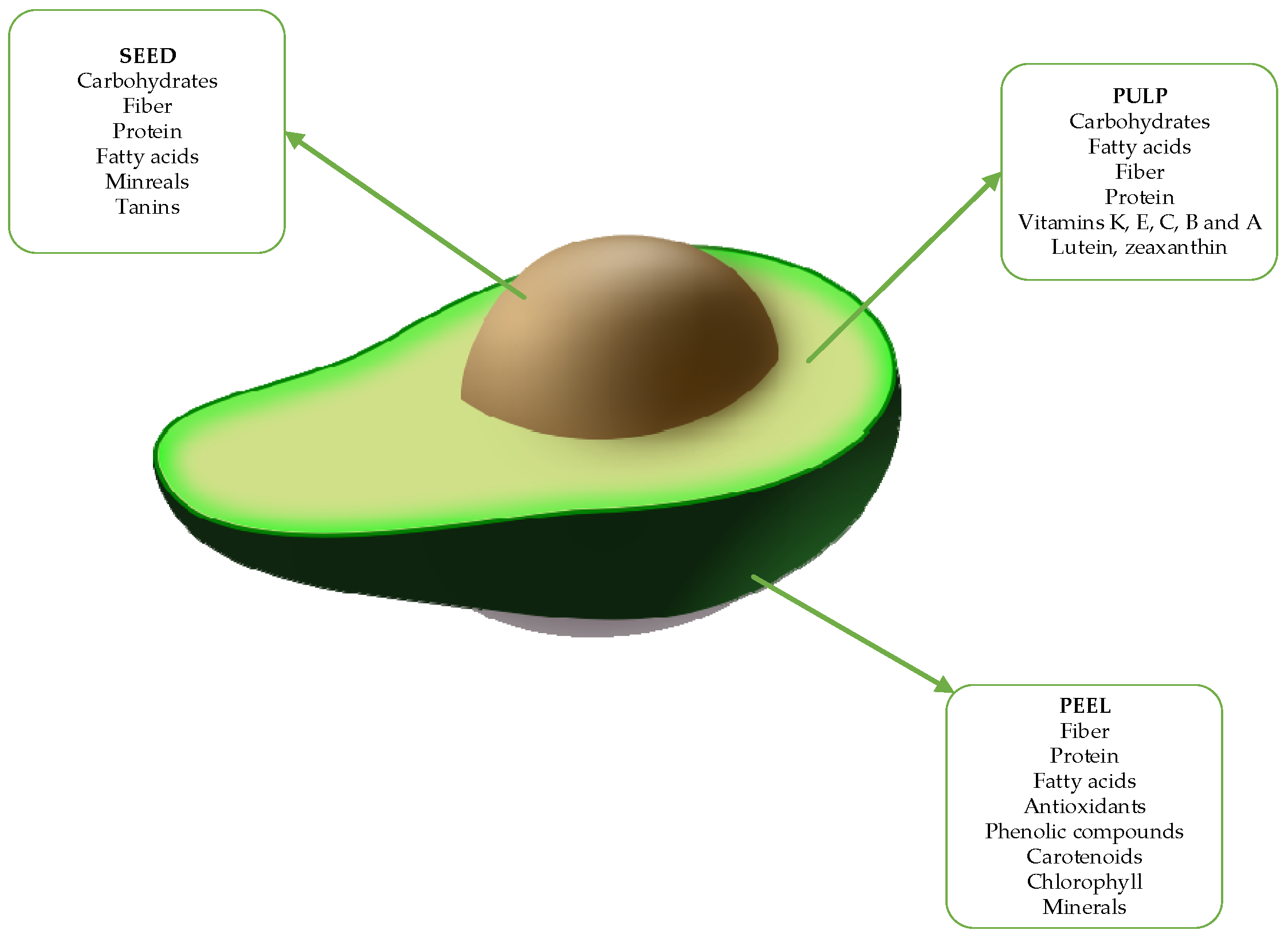
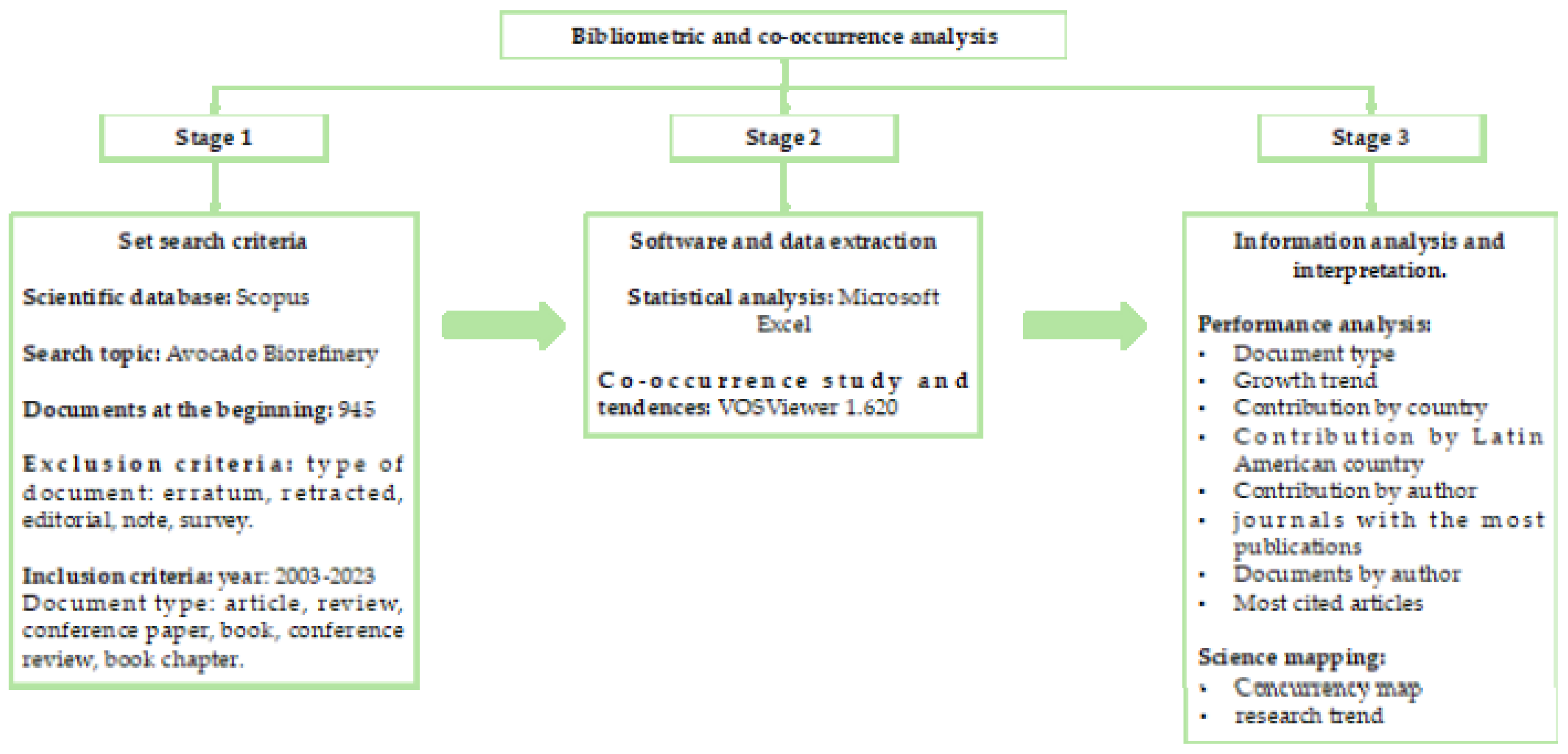
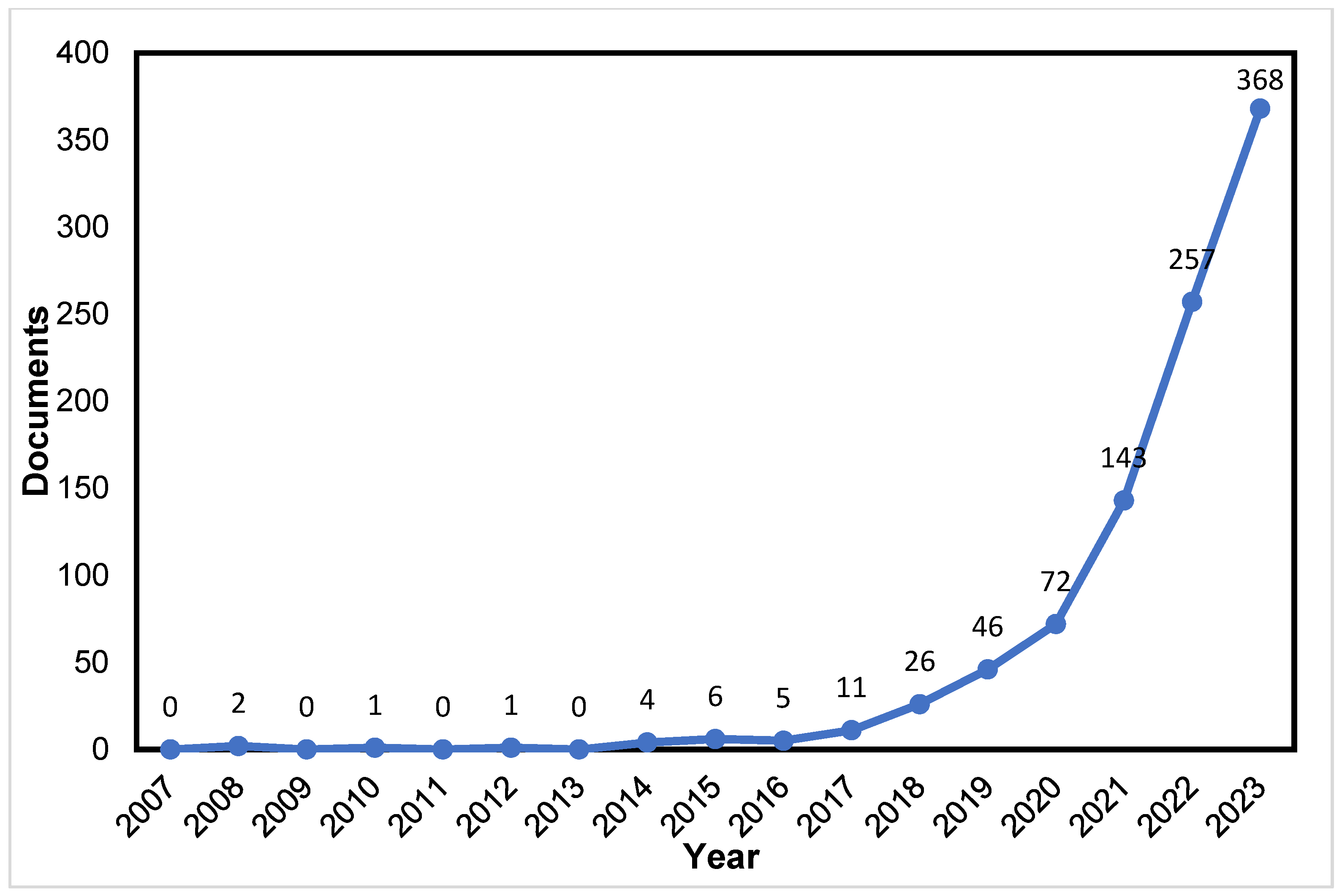
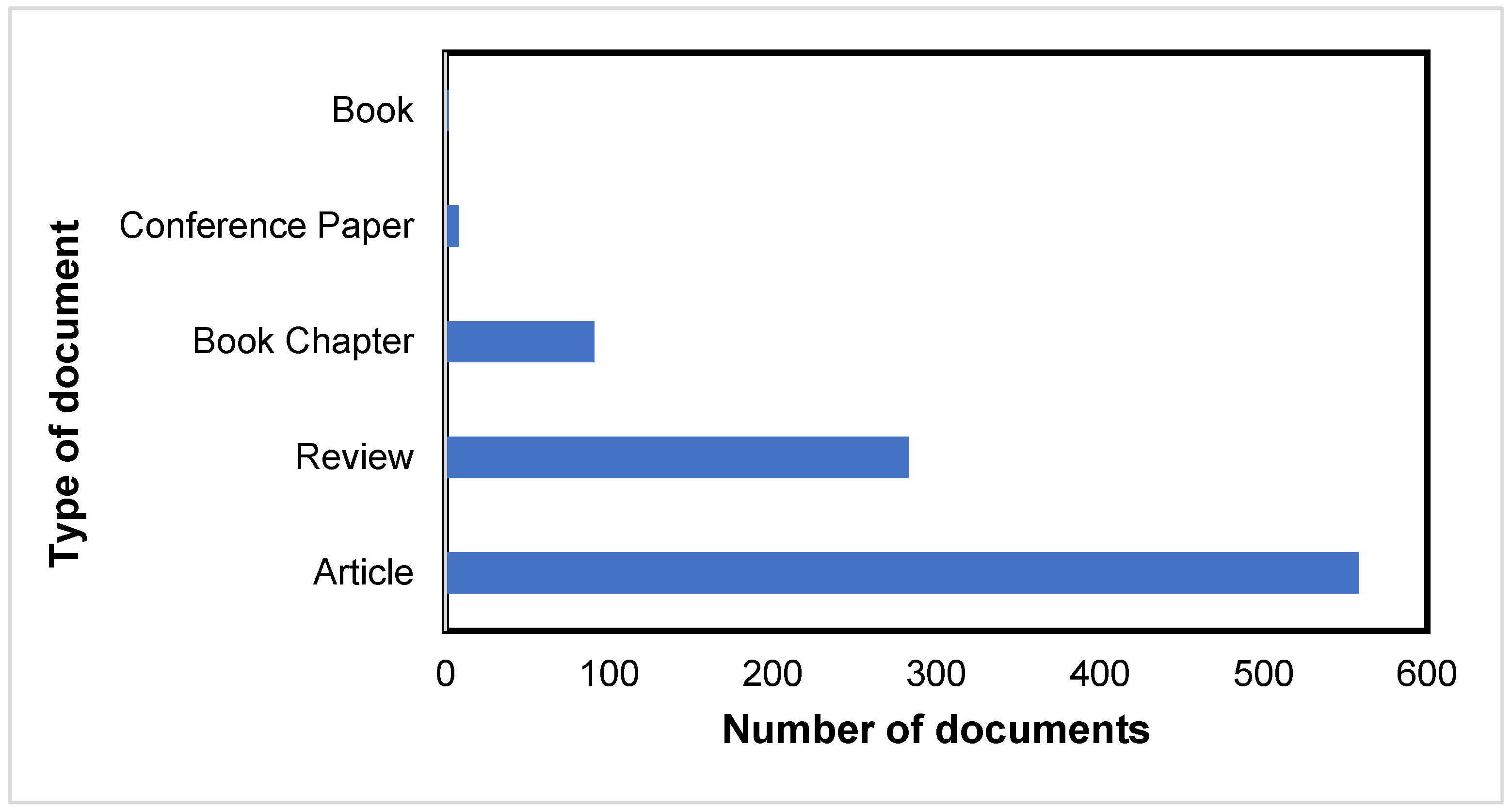
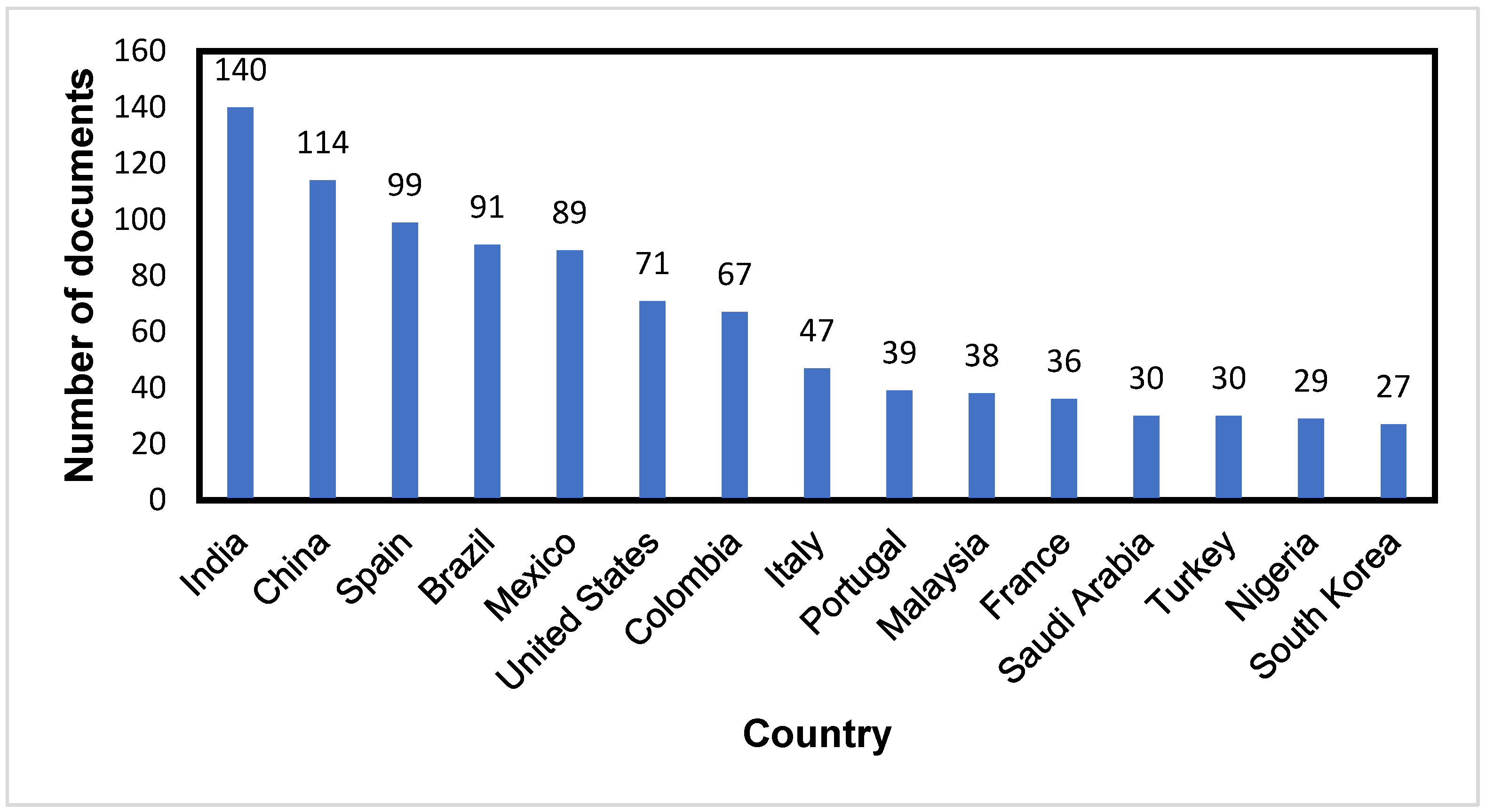
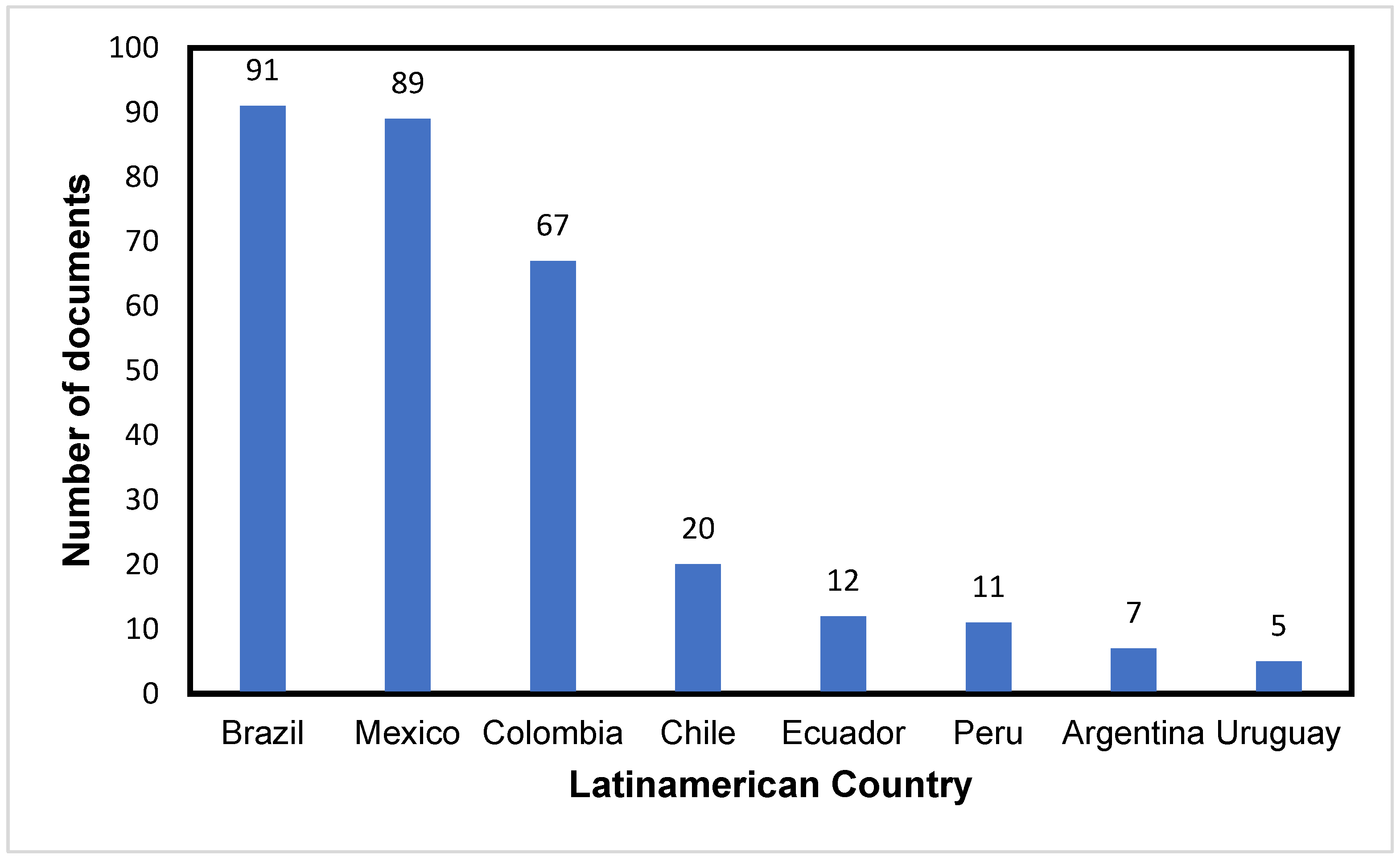
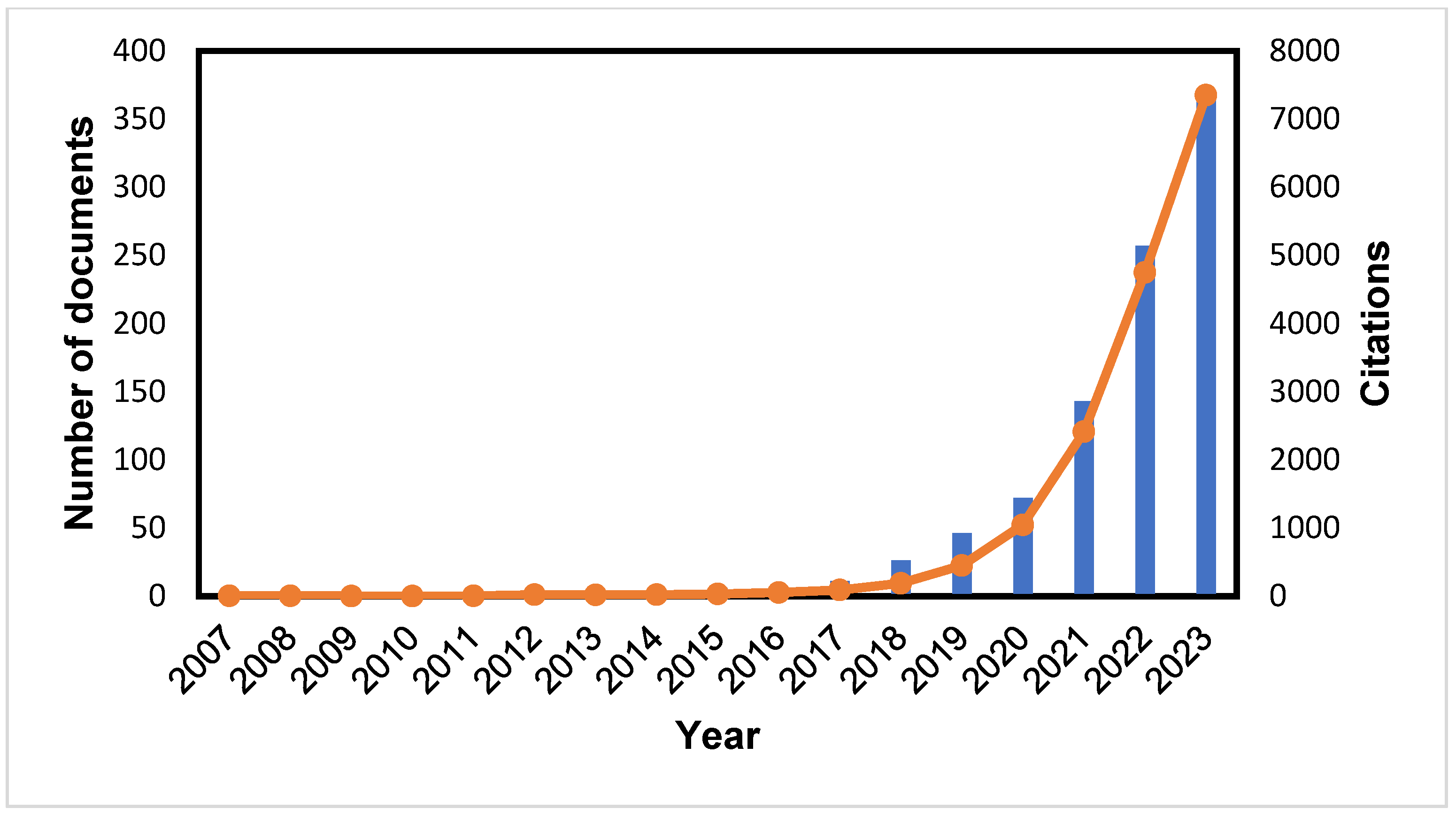
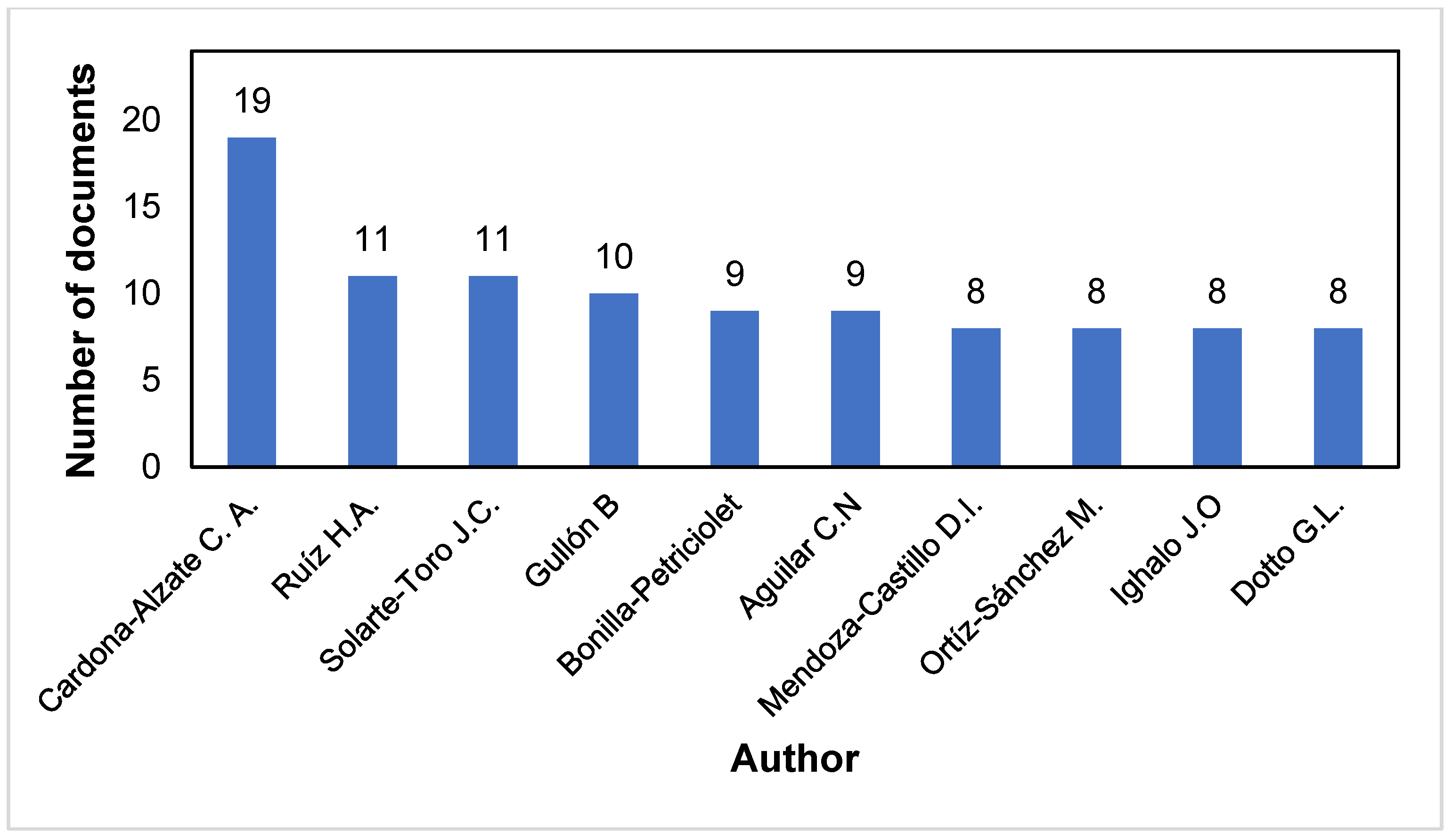
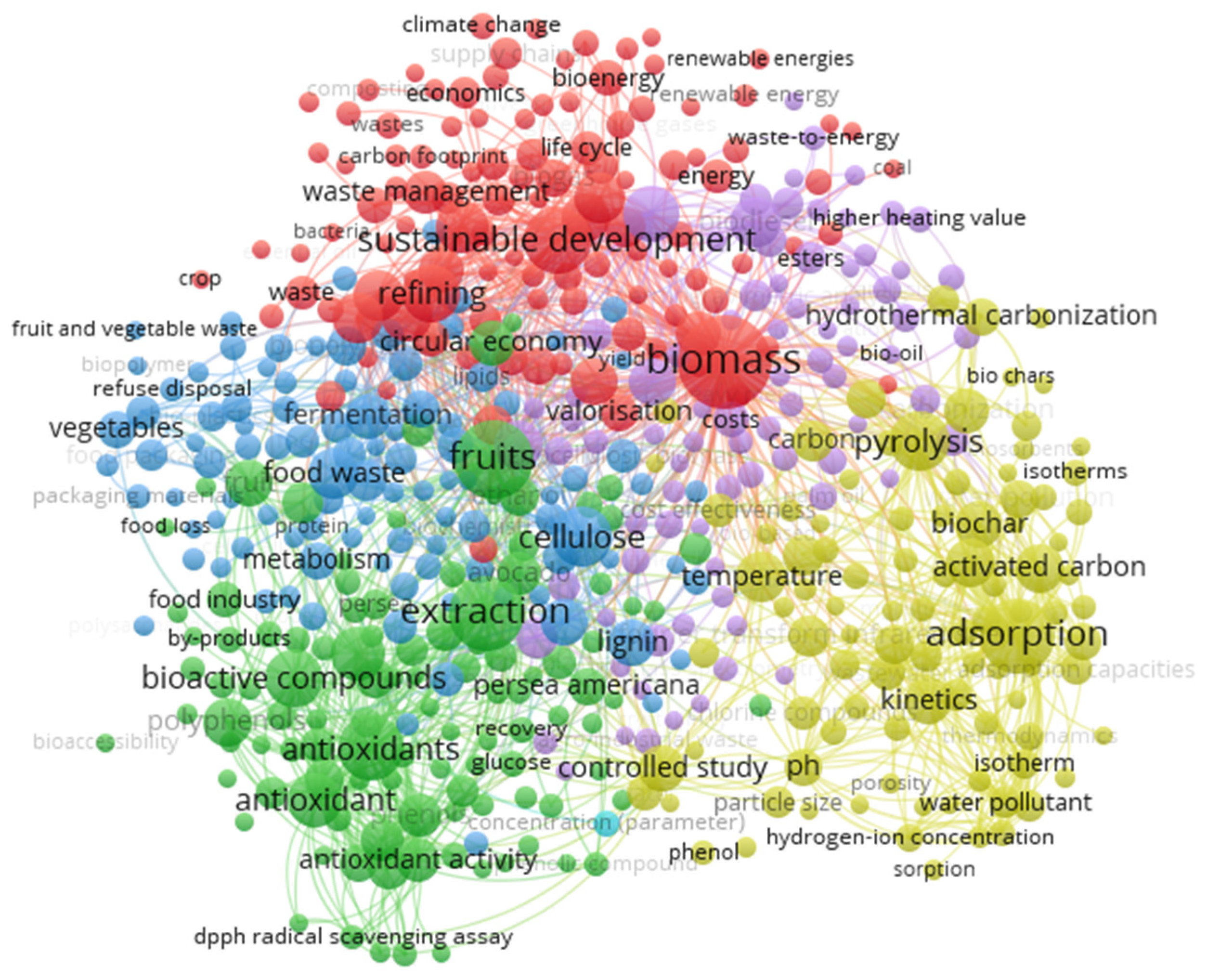
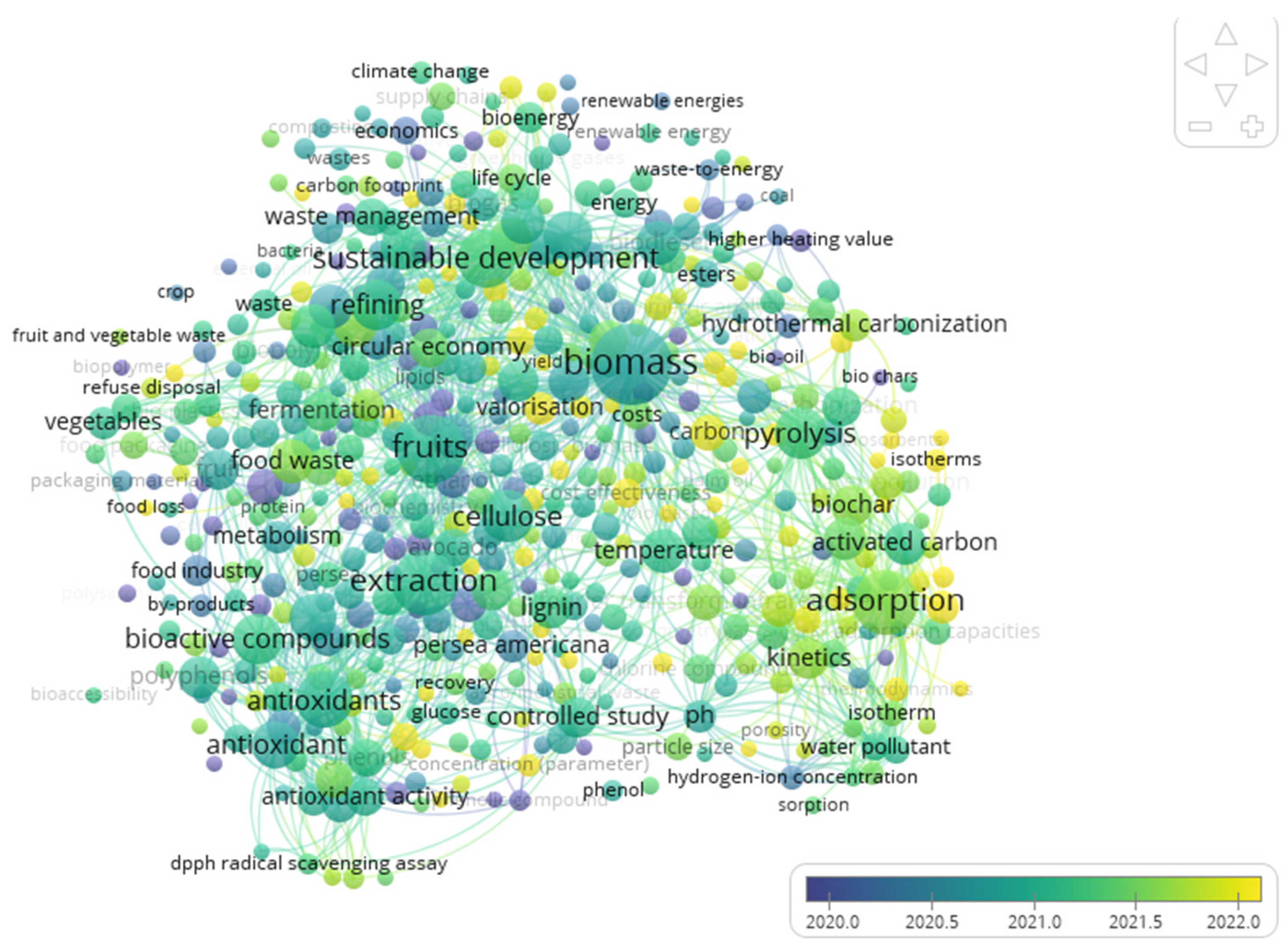
| Source | TD 1 | Percentage | TC 2 | Editorial | PC 3 | SJR 4 | SNIP 5 | h-Index | JIF 6 | JCI 7 |
|---|---|---|---|---|---|---|---|---|---|---|
| Biomass Conversion and Biorefinery | 61 | 9.80 | 5808 | Elsevier | 6.6 | 3.158 | 3.396 | 162 | 4.05 | 4.00 |
| Molecules | 23 | 3.32 | 184,529 | Multidisciplinary Digital Publishing Institute (MDPI) | 6.7 | 0.704 | 1.167 | 199 | 4.60 | 4.60 |
| Foods | 22 | 2.66 | 56,352 | Multidisciplinary Digital Publishing Institute (MDPI) | 5.8 | 0.771 | 1.302 | 73 | 5.20 | 5.20 |
| Industrial Crops and Products | 22 | 2.66 | 43,674 | Elsevier | 9.7 | 0.897 | 1.567 | 158 | 5.90 | 5.90 |
| Bioresource Technology | 21 | 2.99 | 128,275 | Elsevier | 19 | 2.47 | 2.016 | 341 | 11.40 | 11.40 |
| Journal of Cleaner Production | 17 | 2.66 | 351,758 | Elsevier | 18.5 | 1.981 | 2.379 | 268 | 11.90 | 11.10 |
| Sustainability (Switzerland) | 17 | 1.66 | 281,274 | Multidisciplinary Digital Publishing Institute (MDPI) | 5.8 | 0.664 | 1.198 | 136 | 3.90 | 3.90 |
| Antioxidants | 15 | 1.99 | 55,568 | Multidisciplinary Digital Publishing Institute (MDPI) | 8.8 | 1.084 | 1.541 | 83 | 7.00 | 7.00 |
| Renewable and Sustainable Energy Reviews | 13 | 1.99 | 93,763 | Elsevier | 26.3 | 3.232 | 3.631 | 378 | 15.90 | 0.10 |
| Applied Sciences (Switzerland) | 12 | 1.50 | 176,120 | Multidisciplinary Digital Publishing Institute (MDPI) | 25.2 | 0.492 | 0.974 | 378 | 2.70 | 2.70 |
| Processes | 11 | 1.50 | 35,451 | Multidisciplinary Digital Publishing Institute (MDPI) | 4.7 | 0.529 | 0.979 | 54 | 3.50 | 3.50 |
| Journal of Supercritical Fluids | 10 | 1.33 | 7818 | Elsevier | 8.3 | 0.751 | 1.132 | 126 | 3.90 | 3.90 |
| Trends in Food Science and Technology | 10 | 1.66 | 37,308 | Elsevier | 25.2 | 2.522 | 3.335 | 231 | 15.30 | 0.10 |
| Chemical Engineering Journal | 9 | 1.33 | 376,280 | Elsevier | 21.5 | 2.803 | 2.176 | 280 | 15.10 | 15.10 |
| Chemical Engineering Transactions | 9 | 1.33 | 4831 | AIDIC-Italian Association of Chemical Engineering | 1.5 | 0.242 | 0.397 | 43 | 0.97 | 0.10 |
| Energies | 9 | 1.33 | 161,755 | Multidisciplinary Digital Publishing Institute (MDPI) | 5.5 | 0.632 | 1.025 | 132 | 3.20 | 3.20 |
| Environmental Science and Pollution Research | 9 | 1.16 | 141,408 | Springer Nature | 6.9 | 0.944 | 1.214 | 179 | 5.4 | 7.9 |
| Critical Reviews in Food Science and Nutrition | 8 | 1.16 | 28,142 | Taylor and Francis | 14.9 | 1.862 | 2.751 | 215 | 10.2 | 23.6 |
| Food Research International | 8 | 1.16 | 47,214 | Elsevier | 12 | 1.36 | 1.821 | 195 | 8.10 | 8.10 |
| Plants | 8 | 1.16 | 47,082 | Multidisciplinary Digital Publishing Institute (MDPI) | 5.4 | 0.79 | 1.277 | 67 | 4.50 | 4.50 |
| Authors | Title | Year | Cites | Cites/y | Journal |
|---|---|---|---|---|---|
| Araújo, R. G., Rodriguez-Jasso, R. M., Ruiz, H. A., Pintado, M. M. E., y Aguilar, C. N. [71] | Avocado by-products: Nutritional and functional properties | 2018 | 276 | 16.24 | Trends in Food Science & Technology |
| Ruiz H.A., Conrad M., Sun S.-N., Sanchez A., Rocha G.J.M., Romaní A., Castro E., Torres A., Rodríguez-Jasso R.M., Andrade L.P., Smirnova I., Sun R.-C., y Meyer A.S. [72] | Engineering aspects of hydrothermal pretreatment: From batch to continuous operation, scale-up, and pilot reactor under biorefinery concept | 2020 | 249 | 14.65 | Bioresource Technology |
| Mora-Sandí, A., Ramírez-González, A., Castillo-Henríquez, L., Lopretti-Correa, M., y Vega-Baudrit, J. R. [73] | Valorization of byproducts from tropical fruits: Extraction methodologies, applications, environmental, and economic assessment: A review (Part 1: General overview of the byproducts, traditional biorefinery practices, and possible applications) | 2020 | 91 | 5.35 | Comprehensive Reviews in Food Science and Food Safety |
| Dávila, J. A., Rosenberg, M., Castro, E., y Cardona, C. A. [74] | A model biorefinery for avocado (Persea americana mill.) processing | 2017 | 83 | 4.88 | Bioresource technology |
| Solarte-Toro, J. C., y Alzate, C. A. C. [75] | Biorefineries as the base for accomplishing the sustainable development goals (SDGs) and the transition to bioeconomy: Technical aspects, challenges and perspectives | 2021 | 57 | 3.35 | Bioresource Technology |
| Villacís-Chiriboga, J., Elst, K., Van Camp, J., Vera, E., y Ruales, J. [76] | Avocado-derived biomass as a source of bioenergy and bioproducts | 2020 | 54 | 3.18 | Applied Sciences |
| Paramos, P. R., Granjo, J. F., Corazza, M. L., y Matos, H. A. [40] | Extraction of high value products from avocado waste biomass | 2020 | 45 | 2.65 | The Journal of Supercritical Fluids |
| Lara-Flores, A. A., Araújo, R. G., Rodríguez-Jasso, R. M., Aguedo, M., Aguilar, C. N., Trajano, H. L., & Ruiz, H. A. [49] | Bioeconomy and biorefinery: valorization of hemicellulose from lignocellulosic biomass and potential use of avocado residues as a promising resource of bioproducts | 2018 | 34 | 2.00 | Waste to Wealth |
| Del Castillo-Llamosas, A., del Río, P. G., Pérez-Pérez, A., Yáñez, R., Garrote, G., y Gullón, B. [39] | Recent advances to recover value-added compounds from avocado by-products following a biorefinery approach | 2021 | 26 | 1.53 | Current Opinion in Green and Sustainable Chemistry |
| Solarte-Toro, J. C., Ortiz-Sanchez, M., Restrepo-Serna, D. L., Piñeres, P. P., Cordero, A. P., y Alzate, C. A. C [23] | Influence of products portfolio and process contextualization on the economic performance of small-and large-scale avocado biorefineries | 2021 | 14 | 0.82 | Bioresource Technology |
Disclaimer/Publisher’s Note: The statements, opinions and data contained in all publications are solely those of the individual author(s) and contributor(s) and not of MDPI and/or the editor(s). MDPI and/or the editor(s) disclaim responsibility for any injury to people or property resulting from any ideas, methods, instructions or products referred to in the content. |
© 2024 by the authors. Licensee MDPI, Basel, Switzerland. This article is an open access article distributed under the terms and conditions of the Creative Commons Attribution (CC BY) license (https://creativecommons.org/licenses/by/4.0/).
Share and Cite
Aguilar-Vasquez, E.A.; Herrera-Rodriguez, T.C.; González-Delgado, Á.D. Comprehensive Utilization of Avocado in Biorefinery: A Bibliometric and Co-Occurrence Approach 2003–2023. Sustainability 2024, 16, 9414. https://doi.org/10.3390/su16219414
Aguilar-Vasquez EA, Herrera-Rodriguez TC, González-Delgado ÁD. Comprehensive Utilization of Avocado in Biorefinery: A Bibliometric and Co-Occurrence Approach 2003–2023. Sustainability. 2024; 16(21):9414. https://doi.org/10.3390/su16219414
Chicago/Turabian StyleAguilar-Vasquez, Eduardo Andrés, Tamy Carolina Herrera-Rodriguez, and Ángel Darío González-Delgado. 2024. "Comprehensive Utilization of Avocado in Biorefinery: A Bibliometric and Co-Occurrence Approach 2003–2023" Sustainability 16, no. 21: 9414. https://doi.org/10.3390/su16219414
APA StyleAguilar-Vasquez, E. A., Herrera-Rodriguez, T. C., & González-Delgado, Á. D. (2024). Comprehensive Utilization of Avocado in Biorefinery: A Bibliometric and Co-Occurrence Approach 2003–2023. Sustainability, 16(21), 9414. https://doi.org/10.3390/su16219414







